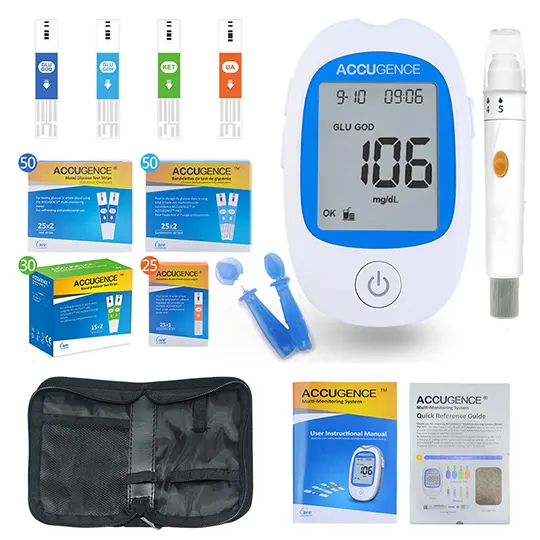Dosing and uses of Taflinar (dabrafenib)
Adult dosage forms and strengths
capsule
- 50mg
- 75mg
Melanoma
BRAF protein kinase inhibitor indicated as a single agent for unresectable or metastatic melanoma with BRAF V600E mutation, or in combination with trametinib for BRAF V600E or V600K mutations
Single agent: 150 mg PO BID at least 1 hr ac or 2 hr pc
Combination regimen: 150 mg PO BID plus trametinib 2 mg PO qDay
Dosage modifications
Dose reductions for dabrafenib (single agent or in combination with trametinib)
- First dose reduction: 100 mg PO BID
- Second dose reduction: 75 mg PO BID
- Third dose reduction: 50 mg PO BID
- If unable to tolerate 50 mg BID: Permanently discontinue
Dose reductions for trametinib when administered with dabrafeniB
- First dose reduction: 1.5 mg PO qDay
- Second dose reduction: 1 mg PO qDay
- Subsequent modification: Permanently discontinue if unable to tolerate trametinib 1 mg/day
Febrile drug reaction
- Fever of 101.3-104°F: Withhold dabrafenib until fever resolves, then resume at same or lower dose; do not modify trametinib
- Fever >104°F or complicated by rigors, hypotension, dehydration, or renal failure: Withhold trametinib until fever resolves, then resume at same or lower dose; withhold dabrafenib, then resume at same or lower dose (or permanently discontinue)
Cutaneous reactions
- Intolerable Grade 2 skin toxicity, or Grades 3 or 4:
- Withhold for up to 3 weeks; if improved, resume at lower dose level
- If not improved after withholding 3 weeks, permanently discontinue
- Applies to both trametinib and dabrafenib
Asymptomatic LVEF
- Asymptomatic, absolute decrease in LVEF ≥10% from baseline, but is below LLN from pretreatment value:
- Trametinib: Withhold for up to 4 weeks; if improved to normal LVEF value, resume at a lower dose level; if not improved to normal, permanently discontinue
- Dabrafenib: Do not modify dose
Symptomatic CHF
- Symptomatic congestive heart failure (absolute decrease in LVEF >20% from baseline that is below LLN:
- Trametinib: Permanently discontinue
- Dabrafenib: Withhold, if improved, then resume at the same dose
Uncomplicated DVT or Pe
- Trametinib: Withhold trametinib for up to 3 weeks; if improved to Grade 0-1, resume at a lower dose level, if not improved, permanently discontinue
- Dabrafenib: Do not modify dose
Life-threatening Pe
- Trametinib: Permanently discontinue
- Dabrafenib: Permanently discontinue
RPEd
- Grade 2-3 retinal pigment epithelia detachments (RPED):
- Trametinib: Withhold for up to 3 weeks; if improved to Grade 0-1, resume at a lower dose level, if not improved, permanently discontinue
- Dabrafenib: Do not modify dose
Retinal vein occlusion
- Trametinib: Permanently discontinue
- Dabrafenib: Do not modify dose
Uveitis and iritis
- Trametinib: Do not modify dose
- Dabrafenib: Withhold for up to 6 weeks; if improved to Grade 0-1, resume at same dose, if not improved, permanently discontinue
Pulmonary reactions
- Interstitial lung disease/pneumonitis
- Trametinib: Permanently discontinue
- Dabrafenib: Do not modify dose
Other
- Applies to both trametinib and dabrafenib
- Intolerable Grade 2 or any Grade 3 adverse reactions: Withhold for up to 3 weeks; if improved to Grade 0-1, resume at lower dose level, if not improved, permanently discontinue
- First occurrence of any Grade 4 reaction: Withhold until improves to Grade 0-1, then resume at lower dose level, or permanently discontinue
- Recurrent Grade 4 reactions: Permanently discontinue
Dosing Considerations
Confirm the presence of BRAF V600E mutation in tumor specimens prior to initiation of treatment with THxID BRAF Kit
Information on FDA-approved tests for the detection of BRAF V600 mutations in melanoma is available at https://www.fda.gov/CompanionDiagnostics
Not indicated for treatment of patients with wild-type BRAF melanoma
Non-small Cell Lung Cancer (Orphan)
Orphan designation for treatment of patients with BRAF mutation positive non-small cell lung cancer
Sponsor
- GlaxoSmithKline; 5 Crescent Drive; Phildelphia, PA 19112
Glioma (Orphan)
Orphan designation for treatment of malignant glioma with BRAF V600 mutation
Sponsor
- Novartis Pharmaceuticals Corporation; 1 Health Plaza, Bldg 337; East Hanover, New Jersey 07936
Thyroid Cancer (Orphan)
Orphan designation for treatment of anaplastic thyroid cancer and locally advanced or metastatic papillary thyroid cancer with BRAF V600 mutation in combination with trametiniB
Sponsor
- Novartis Pharmaceuticals Corp; One Health Plaza; East Hanover, New Jersey 07936
Pediatric dosage forms and strengths
Safety and efficacy not established
Taflinar (dabrafenib) adverse (side) effects
All grade toxicities reported
>10%
Hyperglycemia (50%)
Hypophosphatemia (37%)
Hyperkeratosis (37%)
Headache (28%)
Arthralgia (27%)
Papilloma (27%)
Alopecia (22%)
Palmar-planter erythrodysesthesia syndrome (20%)
Increased alkaline phosphatase (19%)
Rash (17%)
Back pain (12%)
Cough (12%)
Myalgia (11%)
Constipation (11%)
1-10%
Nasopharyngitis (10%)
Hyponatremia (8%)
Cutaneous squamous cell carcinoma (7%)
Pancreatitis (<10%)
Hypersensitivity manifesting as bullous rash (<10%)
Interstitial nephritis (<10%)
Warnings
Contraindications
None
Cautions
Increases incidence of cutaneous squamous cell carcinoma, keratoacanthoma, and new incidence melanoma; perform dermatologic evaluations prior to initiation of therapy, every 2 months while on therapy, and for up to 6 months following discontinuation
BRAF inhibitors may cause paradoxical activation of MAP-kinase signaling and increased cell proliferation in BRAF wild-type cells; confirm evidence of BRAF V600E mutation status prior to initiation
Withhold if fever >101.3°F or complicated fever occurs (see Dosage modifications)
Hemorrhage, including major hemorrhages, can occur when used in combination with trametiniB
Venous thromboembolism can occur when used in combination with trametiniB
Hyperglycemia reported; monitor serum glucose levels in patients with pre-existing diabetes or hyperglycemia
Risk of cardiomyopathy when used as a single agent or with trametinib; reassess LVEF after 1 month of treatment and then ~ every 2-3 months thereafter
Uveitis, iritis, and retinal pigment epithelial detachment (RPED) reported; monitor patients routinely for visual symptoms
Risk of serious skin toxicity including rash, dermatitis, acneiform rash, palmar-plantar erythrodysesthesia syndrome, and erythema
Contains a sulfonamide moiety which increases the risk of hemolytic anemia in patients with G6PD deficiency
Based on its mechanism of action, dabrafenib can cause fetal harm; advise females of reproductive potential of potential risk to a fetus
Dabrafenib may render hormonal contraceptives less effective and an alternative method of contraception should be used
Concurrent administration of strong inhibitors or inducers of CYP3A4 or CYP2C8; coadministration with substrates of these isoenzymes is not recommended
Drugs that increase gastric pH may decrease dabrafenib concentrations
Dabrafenib inhibits certain CYP isoenzymes; concomitant use with drugs that are sensitive substrates of CYP3A4, CYP2C8, CYP2C9, CYP2C19, or CYP2B6 may result in loss of efficacy of these drugs
Incidence and severity of pyrexia are increased with dabrafenib and trametiniB
Pregnancy and lactation
Pregnancy category: d
Lactation: Unknown if distributed in human breast milk; a decision should be made whether to discontinue nursing or discontinue the drug, taking into account the importance of the drug to the mother
Pregnancy categories
A: Generally acceptable. Controlled studies in pregnant women show no evidence of fetal risk.
B: May be acceptable. Either animal studies show no risk but human studies not available or animal studies showed minor risks and human studies done and showed no risk.
C: Use with caution if benefits outweigh risks. Animal studies show risk and human studies not available or neither animal nor human studies done.
D: Use in LIFE-THREATENING emergencies when no safer drug available. Positive evidence of human fetal risk.
X: Do not use in pregnancy. Risks involved outweigh potential benefits. Safer alternatives exist.
NA: Information not available.
Pharmacology of Taflinar (dabrafenib)
Mechanism of action
Inhibits some mutated forms of BRAF kinases with in vitro IC50 values of 0.65, 0.5, and 1.84 nM for BRAF V600E, BRAF V600K, and BRAF V600D enzymes, respectively
Absorption
Bioavailability: 95%
Peak plasma time: 2 hr
High-calorie meal decreased AUC by 31%, Cmax by 51%, and delayed Tmax by 3.6 hr compared with fasted state
Distribution
Protein Bound: 99.7%
Vd: 70.3 L
Metabolism
Primarily mediated by CYP2C8 and CYP3A4 to form hydroxy-dabrafeniB
Hydroxy-dabrafenib is further oxidized via CYP3A4 to form carboxy-dabrafenib and subsequently excreted in bile and urine
Carboxy-dabrafenib is decarboxylated to form desmethyl-dabrafenib; desmethyl-dabrafenib may be reabsorbed from the gut
Desmethyl-dabrafenib is further metabolized by CYP3A4 to oxidative metabolites
Elimination
Half-life: 8 hr (parent); 10 hr (hydroxy-dabrafenib); 21-22 hr (carboxy- and desmethyl-dabrafenib)
Clearance: 17 L/hr (single dose); 34.4 L/hr (after 2 wk of BID dosing)
Excretion: 71% feces; 23% urine (as metabolites only)
Administration
Instructions
Take on empty stomach at least 1 hr before or 2 hr after meals
A missed dose can be taken up to 6 hr prior to the next dose
Swallow capsule whole; do not open, chew, crush, or break



